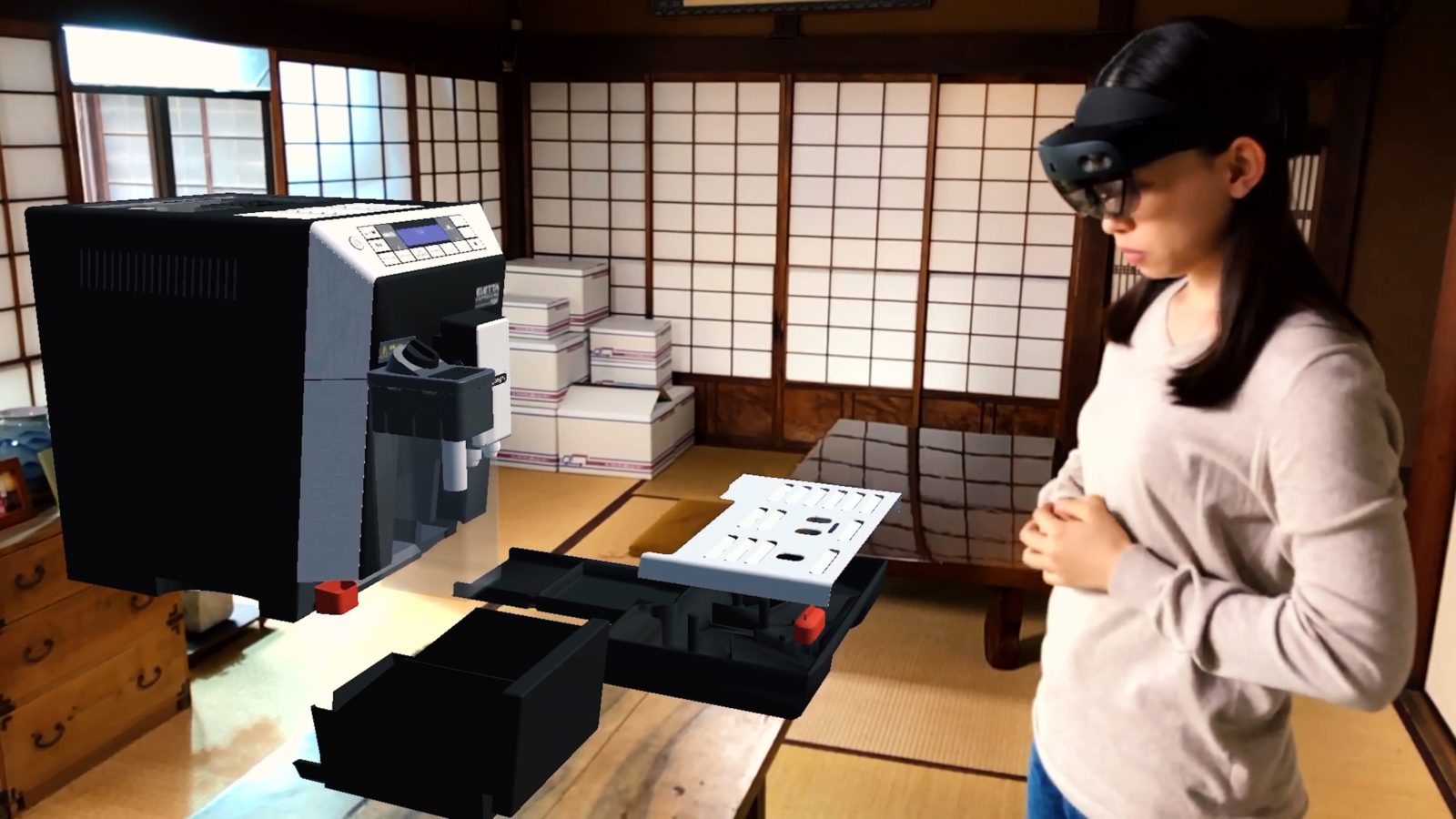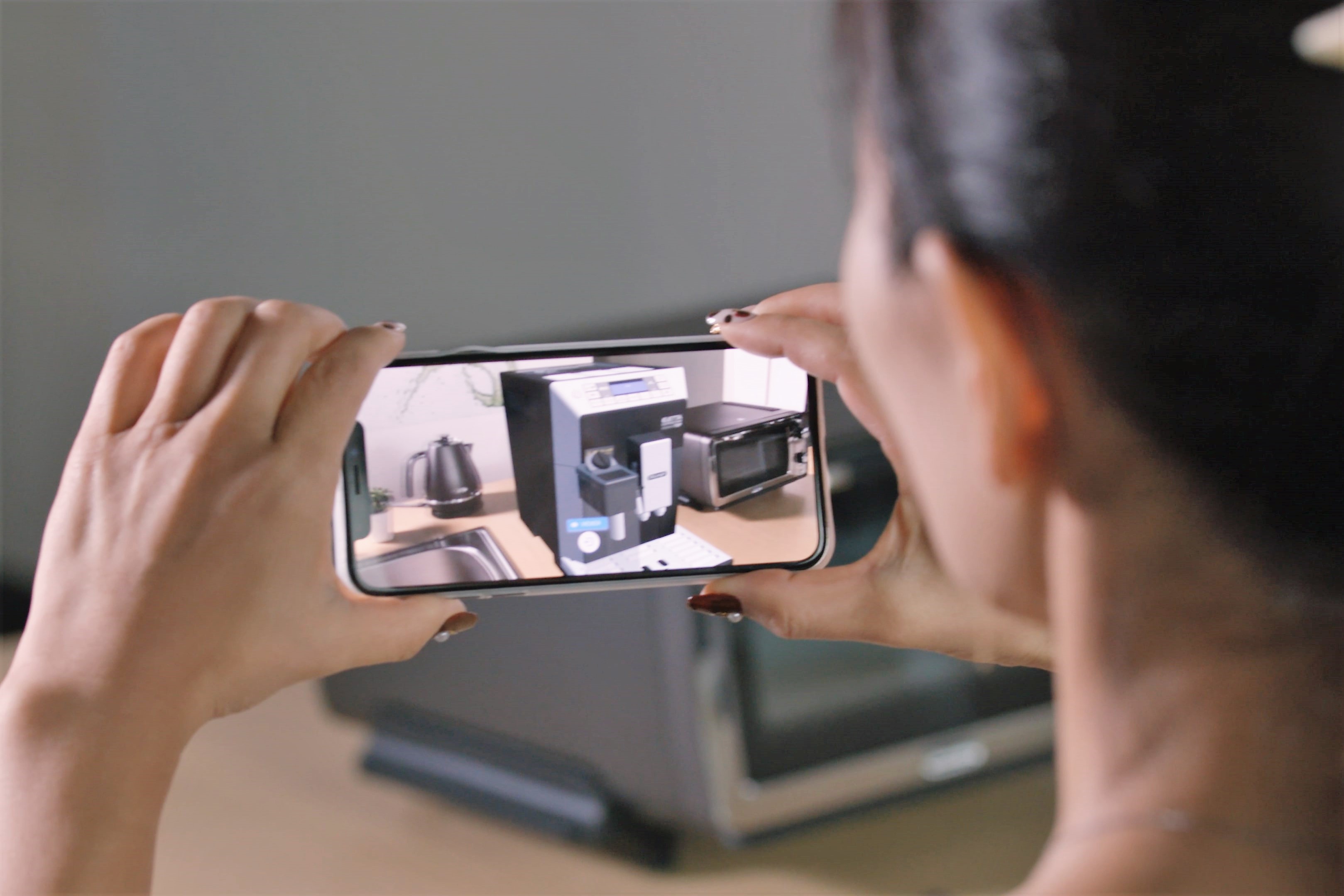
Mixed reality and the cloud to deliver better work-life balance
Facing labor shortages, a call center company in aging Japan turns to HoloLens 2 to create flexible working opportunities for employees
Mixed reality (MR) technology is changing how we work, play, and do business. Now a new MR project in Japan promises to transform the intense hands-on and physical way call centers function so as to meet the work-life balance needs of an aging population and labor force.
The aim is to improve not only customer service, but also the lives of thousands of employees and their families by giving them unprecedented flexibility over where and when they work.
Contacting a call center is part of 21st-century consumer life. When something goes wrong with something we’ve bought, we immediately get on the phone or online to ask how to fix it.
Sometimes we might find ourselves talking with someone in a different city or country. Wherever they are, they are likely sitting in front of row after row of screens in a vast open office – talking through headsets to solve problems and handle complaints. It can be concentrated, regimented, and almost factory-like in structure.
In call centers that deal with issues surrounding tangible products, such as electrical appliances, it is standard practice to keep a broad range of product models at hand. That is so an operator can physically touch and manipulate a product model as he or she explains its functions and describes solutions to consumers who are on the other end of the line.
Now there is a new way, and it is being trialed by Bellsystem24 Holdings, Inc. – a major call center company in Japan with more than 30,000 operators in 30 centers.
It has just launched what it calls Call Center Virtualization to handle customer product services for one of its top clients, De’Longhi Japan Corp., which sells high-end home appliances, including coffee makers, heaters, and air-purifying fans.
This is how it works: An operator dons a Microsoft HoloLens 2 headset so they can see and manipulate an exact 3-D virtual reproduction of a product as they do their explaining, problem-solving, and question-answering.
With mixed reality technology, we can virtually deal with products … We think part of the customer service business can be done anywhere.
– Shinsuke Kageyama, Corporate Officer for business strategy and corporate social responsibility at Bellsystem24
Not only does that eliminate the need to have physical product models at hand, but it also gives operators an option of not having to travel to a physical call center for a structured shift.
Because the hologram data is stored in the cloud on Microsoft Azure, it can be used by multiple operators from multiple locations, such as at home.
This empowers employees whose ability to work is constrained by location or time, such as those living in rural areas away from big cities or those who need to balance work with childrearing or eldercare responsibilities. They stay at home and undertake work at the same level as an operator at a traditional call center.
It also opens new opportunities for workers with disabilities and mobility challenges as well as older employees who want to stay in the workforce longer.
In that regard, it has the potential to help ease one of Japan’s biggest social and economic issues – its aging and shrinking population and labor force. Recruiting skilled workers is a major problem for Japanese businesses.
The call center industry is among those sectors facing labor shortages. While it has turned to other remedies such as artificial intelligence (AI) and other digital technologies to boost productivity, it still urgently needs to secure human resources for business growth.
This requires the creation of an environment in which people who want to work can work without fewer physical restrictions, says Shinsuke Kageyama, a Corporate Officer for business strategy and corporate social responsibility at Bellsystem24.
It was against this backdrop that Bellsystem24 partnered with De’Longhi Japan, Microsoft Japan and DataMesh Japan Co., Ltd. to launch a Call Center Workstyle Innovation Project aimed at creating new call center workstyles.
“With mixed reality technology, we can virtually deal with products. Furthermore, by using the cloud, we have a network-based business and flexible work styles,” says Kageyama. “We think part of the customer service business can be done anywhere.”

Call Center Virtualization provides De’Longhi product customer support services from locations other than call centers by combining Microsoft HoloLens 2 with an MR application that utilizes DataMesh’s 3-D hologram technology – DataMesh Director, an MR design and collaboration platform.
Atsuo Sugimoto, President of De’Longhi Japan, sees several significant benefits from this new way of working. Firstly, his company is learning from the knowledge it shares with its partners as service and production levels improve. It also opens the possibility of training workers remotely. And, ultimately, it means operators can respond to and answer customer questions more clearly.
The partners will first test the solution in stages using operators fielding inquiries for De’Longhi products. After that, they will test solution operations with an increasing number of products, operators, and locations.
While conducting various tests during this process, the partners will estimate the effectiveness and required scale for expanding the application of the solution to other products and services.
They will then aim to build a general-purpose business model by the end of 2021 for deployment by clients other than De’Longhi Japan.
“I think the technology of mixed reality allows us to facilitate flexible working anytime, anywhere. Therefore this technology provides better work-life balance,” says Kageyama. “This work style innovation is a breakthrough for the customer service industry. However, it is an innovation not just for industry, but also for social issues.”













